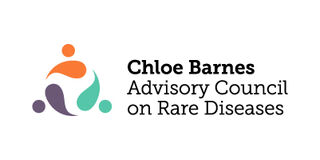Health
People with Rare Diseases Need Better Healthcare
The largest US survey of rare disease healthcare access reveals disparities.
Posted July 11, 2022 Reviewed by Abigail Fagan
Key points
- A new survey of children and adults with rare disorders examined healthcare access and quality of life in the United States.
- Participants reported long and winding diagnostic odysseys with one-third of participants waiting four or more years for a diagnosis.
- The majority of respondents felt they had insufficient medical, psychological, and dental care.
- People with rare disorders had significantly lower quality of life compared to the general U.S. population and people with common disorders.
By Kathleen Bogart and Amanda Hemmesch
Ask nearly anyone in America whether they have experienced challenges with our healthcare system, and they will have a story for you. Most have endured long wait times to see a doctor and high healthcare costs. However, new research shows that these problems are magnified when seeking healthcare for a rare disease. Rare diseases or disorders are defined as conditions affecting fewer than 200,000 people in the United States. Although each disorder is rare, collectively more than 7,000 different rare diseases affect approximately 1 in 10 Americans, meaning that about 10 percent of our population is at risk for these healthcare disparities. Therefore, it is important to look for commonalities across rare diseases.
Diagnostic Odyssey
In the largest study of healthcare access and quality of life among children and adults with rare disorders in America, we surveyed 1,128 adults and caregivers, representing 344 different rare diseases. The most frequently represented rare diseases in our sample were spinocerebellar ataxia, idiopathic hypersomnia, narcolepsy, Ehlers-Danlos syndrome, and primary biliary cholangitis. Many reported a long and winding odyssey searching for an accurate diagnosis. About one-third of participants waited four or more years for a diagnosis, and 16% waited 10 or more years. Approximately half of participants also reported at least one misdiagnosis during their diagnostic odyssey. Nearly one-quarter saw six or more doctors to finally receive an accurate diagnosis. Results from this study suggest that the diagnostic odyssey takes a toll on individuals with rare diseases and their families.
Barriers to Care
Healthcare providers expert in specific rare diseases are themselves rare, so nearly half of participants in this study reported traveling at least 60 miles for care. The majority of participants in our study were relatively privileged in that they had health insurance; but even with insurance, approximately one-quarter of this sample paid $3,000 or more out-of-pocket for healthcare expenses. Approximately 15-20% experienced insurance denials or delays. These barriers to care can add to the potential stress of having a rare disease, threatening quality of life.
Insufficient Healthcare
More than two-thirds of respondents felt they had insufficient psychological and dental care, while half felt their medical and social support was insufficient. When satisfaction with their healthcare was assessed, patients were generally lukewarm. Participants were more likely to be satisfied when they experienced a shorter diagnostic odyssey, less stigma, less pain, and better physical function. These factors suggest places for advocates and policymakers to focus their efforts.
Quality of Life Disparities
Adults and children with rare disorders had significantly poorer health-related quality of life and stigma in all domains compared to the general U.S. population and compared to the scores of people with prevalent conditions (when available). Understandably, challenges accessing appropriate and effective healthcare appear to take a mental toll. High rates of anxiety and depression in both children and adults were more likely to occur when they experienced stigma and poor peer relationships, fatigue, and sleep problems. This study suggests that the experience of having a rare disease in the U.S. is unique, even when comparing that experience to people living with more common diagnoses.
Policy Change is Needed

This study was conducted in collaboration with the Minnesota state Chloe Barnes Advisory Council on Rare Diseases, which was founded by rare disease advocate Erica Barnes and funded by the Minnesota state legislature. Minnesota is one of 24 states with rare disease advisory councils connecting local stakeholders like patients, caregivers, healthcare providers, and insurers with policymakers. These groups identify local challenges and solutions, which may include expanded insurance coverage of drugs and treatments, infant screening for congenital rare disorders, and healthcare provider education. Our survey found healthcare challenges all across the United States, suggesting that more advocacy and policy work is needed. Advisory councils are a promising way to connect local stakeholders and enact change that benefits people with rare diseases regardless of their specific diagnosis.
While living with a rare disease can be isolating, our work finds that connecting with others with rare disorders and advocacy work can reduce stigma and empower people with rare diseases, suggesting that working together for change can provide mental as well as physical health benefits.
Amanda Hemmesch, Ph.D. is a Professor of Psychology at St. Cloud State University and a rare disease advocate.


